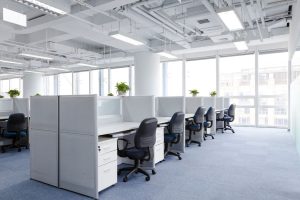

While office furniture is sometimes taken as a basic requirement for operations, it has a big influence on how people operate and how their work environment is shaped. Office furniture’s comfort, ergonomics, and design go well beyond just giving workers a place to work; they also significantly enhance their productivity, well-being, and engagement.
With the correct furnishings, one can increase attention and job satisfaction by encouraging creativity, fostering collaboration, and reducing discomfort and stress. On the other hand, badly picked furniture can cause health problems, lower morale, and a noticeable decline in productivity. So, before you Buy Office Tables Online, here are some crucial factors you should consider:
Table of Contents
Office furniture must be adaptable enough to accommodate different work styles and jobs. Opt for desks that offer height adjustment, flexible seating options, and multifunctional storage options that can support ergonomic comfort and meet a range of needs. Long-term usability and value are ensured by furniture design flexibility, which makes it simple to reconfigure as the organization changes.
Long durations of sitting can be made more comfortable and free of musculoskeletal diseases by using chairs with adjustable armrests and lumbar support. Similar to this, desks with enough legroom and adjustable height options encourage healthy posture and lower the likelihood of strain injuries, which results in a healthier workforce.
The culture, values, and brand identification of the business are reflected in its office furniture. A unified and motivating work atmosphere can be achieved by selecting furniture that complements the company’s style and image.
Regardless of the style chosen—bright colors, classic timber finishes, or sleek modern designs—the furniture should resonate with the brand and blend in with the rest of the interior décor.
Over time, purchasing premium office furniture yields significant returns on investment. Sturdy materials that can resist daily wear and tear include solid wood, steel, and premium plastics. Insights into the furniture’s longevity and dependability, which reduces frequent replacements and maintenance costs, can be gained by evaluating the build quality, warranty coverage, and manufacturer reputation.
Modern offices frequently struggle with space limits, which calls for effective furniture arrangements and storage options. Space-saving storage solutions, flexible dividers, and small desks all optimize floor area without sacrificing design or utility. Optimal office layout and furniture arrangement are made possible by carefully evaluating the available space and workflow needs.
It’s critical to strike a balance between price and quality when buying workplace furniture. Overspending can be avoided without sacrificing quality by setting a reasonable budget and giving priority to necessities. Without compromising on durability or design aesthetics, budget-friendly choices can be explored, such as purchasing in bulk or choosing gently used furniture.
Asking workers about their ergonomic requirements and preferred pieces of furniture encourages participation and a sense of ownership in the decision-making process. Organizing focus groups or surveys to get input on the inadequacies of current furniture and what needs to be improved can help guide purchases and increase productivity and employee satisfaction.
Selecting furniture with low-emission coatings, certified wood, or recycled components lessens carbon footprint and encourages ethical consumption. Choosing furniture with recyclable components or modular designs also makes recycling and easy disassembly at the end of its life cycle possible.
Office furniture in the digital age needs to be able to easily integrate technology. Adjustable monitor arms, integrated power outlets, and cable management systems make it easier to use PCs, laptops, and other electronic devices without taking up space on the desk. Setting aside furniture with integrated technological support guarantees a tidy and well-organized workspace that boosts output.
Minimizing the risk of accidents and liability issues can be achieved by ensuring compliance with laws such as OSHA requirements for workplace safety or ANSI/BIFMA for commercial furnishings. Selecting furniture that possesses the necessary certifications and safety features indicates a dedication to the well-being of employees and adherence to regulations.
Essentially, choosing office furniture is an important choice that goes beyond aesthetics and has a direct impact on employee satisfaction, output, and the overall mood of the company. To develop an environment that serves the different needs of the workforce, budgetary restrictions, and space optimization must be matched with important factors like utility, comfort, ergonomics, and aesthetics.
An optimistic and effective workplace culture can be greatly enhanced by sturdy, high-quality furniture that adheres to sustainability principles, supports technology integration, and is consistent with the company’s brand identity. Incorporating employee preferences and comfort into the selection process can improve employee satisfaction and productivity while also showcasing the company’s dedication to their well-being.
With the ever-evolving beauty industry, makeup trends come and go, but there are a few…
The Dyson Airwrap revolutionized how individuals style their hair. It's the perfect blend of innovation,…
Mother's Day is the day to celebrate the amazing mothers who raised us and took…
Soap nails have been the most trending manicure style of 2025, and it has thrilled…
Ah, prom season—the one marked by sparkling gowns, immaculate tuxes, lifelong memories. But one major…
Acne can be one of the most infuriating skin issues to work with. Whether it's…